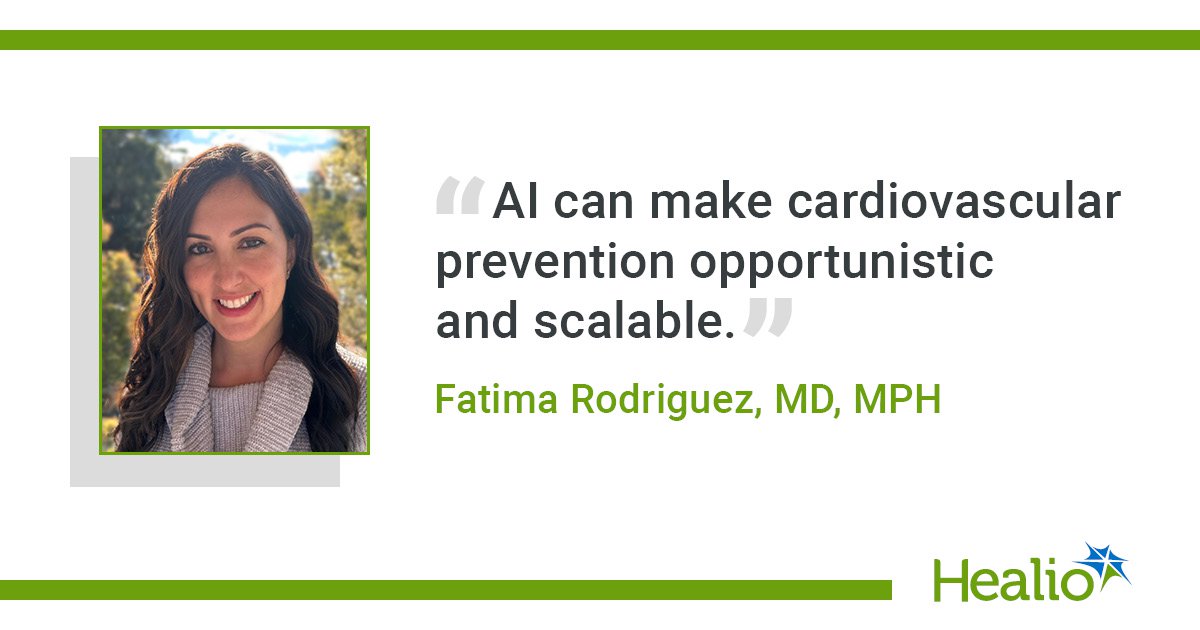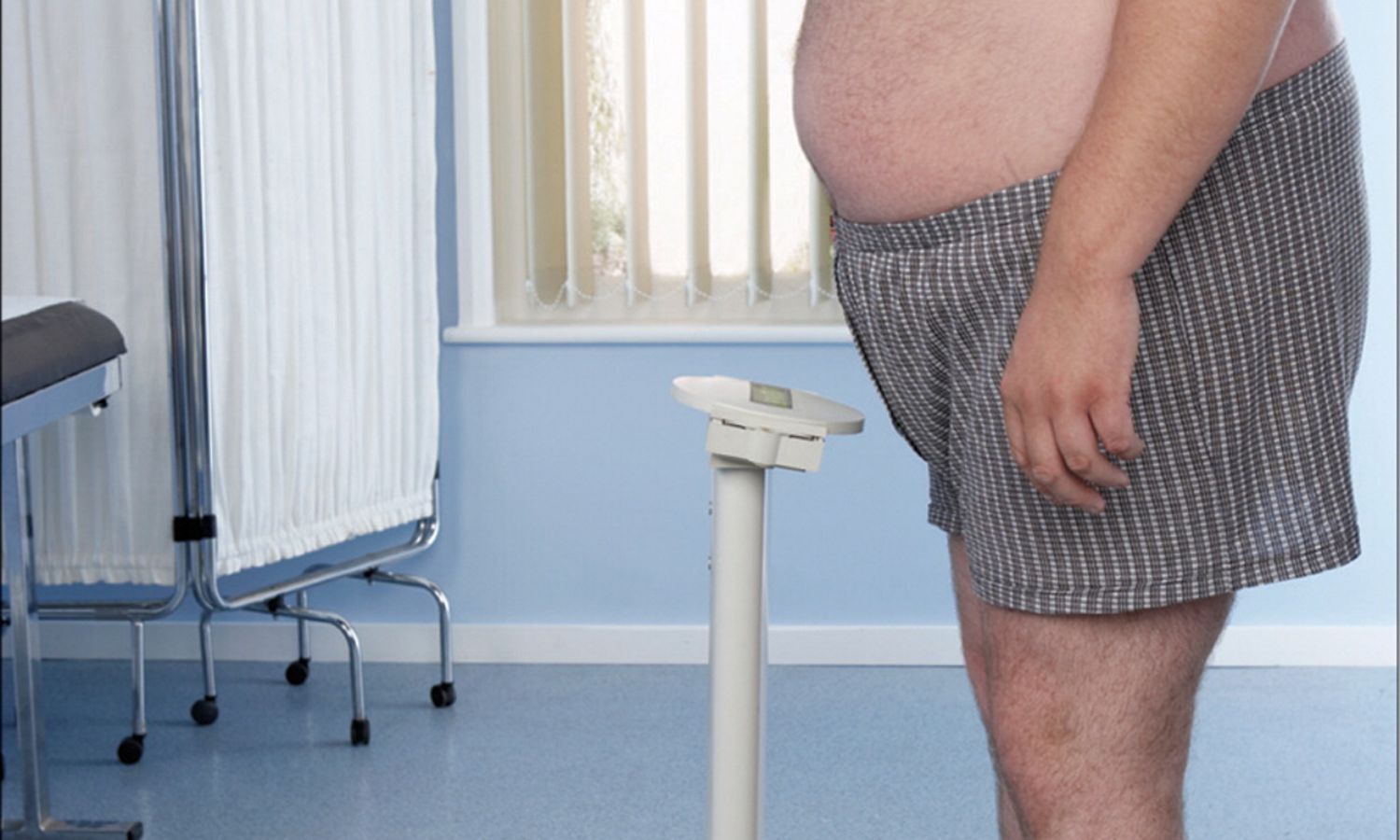August 19, 2025
6 min read
Key takeaways:
- AI can be used to detect cardiovascular conditions long before symptoms appear.
- Cardiologists need to be involved with shaping the direction of AI and ensuring it can promote health equity.
BOSTON — Three speakers outlined how AI is likely to have a major impact on the future of preventive cardiology.
At the American Society for Preventive Cardiology Congress on CVD Prevention, the speakers discussed the importance of preventive cardiologists being involved in shaping the direction of AI in medical care, ways in which use of AI can promote health equity and how AI programs can be used for early detection of CV conditions.

‘Generative AI is here’
It is extremely important that preventive cardiologists take an active role in shaping how AI will be used in patient care, a speaker said.

Ashish Sarraju
“Generative AI is here, not just in the tech-savvy areas of Silicon Valley and the big cities,” Ashish Sarraju, MD, cardiologist in the section of preventive cardiology in the Tomsich Family Department of Cardiovascular Medicine of the Miller Family Heart, Vascular & Thoracic Institute at Cleveland Clinic, said during a presentation. “It’s being used routinely to interpret complex medical data and to provide recommendations to patients, whether we realize it or not, whether it’s with our endorsement or not, whether we know it or not. On our side, it’s being used to create clinical notes and preliminary medical patient communications. This is borne out by data.”
A Cleveland Clinic survey found that 72% of patients said they had used generative AI or would use it to ask medical questions and 65% said they would trust recommendations from a chatbot, Sarraju said.
Of concern, “we have found out that we can very easily prompt [AI models] to generate inaccurate information about CVD prevention with just a little bit of prompt engineering,” he said, citing an example in which ChatGPT cited a paper as showing statins were unsafe when the paper concluded the opposite.
Efforts to combat this are necessary, and heavy government regulation is not the answer because it could stifle innovation, he said. “Generative AI has become democratized, where we can participate in the conversation in a much more robust manner than we could 10 years ago. You do not need to be a software engineer to understand the implications and the penetration of these technologies in our lives and our patients’ lives. So we need to think, what do we, as preventive cardiologists, want from AI? Because it is coming, it is already here, and we have the opportunity to shape its direction if we engage. If we don’t, it will be shaped for us, potentially by stakeholders who want different things from what we want.”
‘Think about digital literacy’
Fatima Rodriguez, MD, MPH, associate professor of cardiovascular medicine, vice chair for clinical research, section chief of preventive cardiology and associate director of the Center for Digital Health at Stanford University School of Medicine, said the health care community needs “to think about digital inclusion as a social determinant of health. It is very important that we think about digital literacy — the skills, the connectivity, the additional training and support that some of our patients may need to make use of the technology that is changing the way we practice medicine.”
“Health techquity” is defined as “the strategic design, development and deployment of technology to advance health equity,” she said. “I will often have companies come to me after they have developed a technology and say, ‘Can you just make this equitable?’ That is the wrong approach. The approach is to do that at the design stage.”
One example of the right approach is the Step It Up mobile health app, which is designed to help Black women increase physical activity. “They actually took into account the perceived neighborhood safety,” Rodriguez said. “They looked at tracts of walking areas and actually recommended places for people to walk. They found the primary outcome of increased step counts was positive with the intervention.”
One way AI can promote health techquity is to identify people with coronary artery calcium from chest CT scans that were done for other reasons, she said. For an algorithm developed at Stanford, “we found that the Agatston scores from the deep learning model predicted CV risk across populations; scores above 100 were associated with significant risk of cardiovascular events. This is a very different population from those we see in the preventive cardiology clinic. It reflected the population of the Bay area. Among these patients that did not have a previous diagnosis of [atherosclerotic] CVD, 50% of them had some level of coronary calcium. This is unknown risk that is readily identifiable. There is a big opportunity for these underserved populations to start statin therapy.”
She concluded that “AI can make cardiovascular prevention opportunistic and scalable, digital inclusion is a cornerstone of health techquity, ensuring that innovations translate to all patients they are intended to serve, and future work must focus on how AI tools improve patient-centered outcomes.”
‘Are we willing to reimagine?’
A priority for the future is to develop, validate and deploy AI-based screening for CVD, Pierre Elias, MD, assistant professor of cardiology and biomedical informatics at Columbia University and medical director for artificial intelligence at NewYork-Presbyterian Hospital, said during a presentation.
“We have mammograms, we have colonoscopies; we have no equivalent for most forms of cardiovascular disease,” he said. “Every doctor in this room has had a patient that makes them think, why am I meeting them so late in the disease course? The way that we diagnose most forms of cardiovascular disease is either too expensive or too invasive to do on a population level.”
To build an AI-based screening system, researchers at Columbia assembled North America’s largest CV imaging database, with more than 12 million ECGs and more than 1.5 million echocardiograms from eight hospitals and 190 clinical sites, he said.
Traditional ways of recruiting for clinical trials and cohort studies are not scalable, so “we created this pipeline for end-to-end inference,” Elias said. “As soon as any imaging data is generated [at one of the hospitals or clinical sites], a copy is automatically created for research purposes. It’s preprocessed and then we run a host of AI models through this. We just finished our fifth clinical trial and have our sixth through ninth starting. We have generated live inferences on 1 million patients.”
A key to future success is clinicians being willing to reimagine how they do their work with the assistance of technology, he said. “We have to wrestle with this question: As our country gets sicker and older and there are going to be fewer doctors, what are we going to do differently?” he said. “Are we willing to reimagine what it means for our daily practice as these new technologies come along? That is the real challenge.”
The EchoNext study published in July in Nature revealed that 9% of patients with an ECG on file were at high risk for structural heart disease, but 45% of them never got a follow-up echocardiogram. “It was stunning to realize that we may be missing half of all structural heart disease diagnoses that are showing up in our health system,” Elias said.
AI can also help interpret echocardiograms, he said, noting that each echo at Columbia now gets reread by AI, and the world’s first mitral valve replacement prompted by an AI overread happened earlier in 2025.
Another disease often missed is cardiac amyloidosis, he said. With that in mind, researchers at Columbia built an AI model and had it validated in a prospective clinical trial of patients who were previously not considered for cardiac amyloidosis evaluation but who would be put on treatment if found to be positive. However, he said, there is still a lot of mistrust of AI among doctors and patients because, of the 256 patients flagged as candidates for the study, 206 did not get a scan because the patient declined or the doctor never responded to the trialists’ outreach.
Of the 50 patients who got a scan, 48% were positive, much higher than the 15% rate seen in routine practice, Elias said, noting that 91% of those with a positive result were put on treatment. “On average, when you put someone on treatment for cardiac amyloidosis, they live 4 years longer,” he said. “Hundreds of years of life we could give people back if we figure this out. Deployment is hard, but this technology worked better than we could have imagined, and it had a profound impact at one of the world’s busiest cardiac amyloid centers.”
Using AI and other technology wisely is essential because “we can’t treat the patient that we don’t know about,” Elias said. “These AI-based opportunistic screening programs can fundamentally transform the way that we get to patients, and how we think about taking care of them, and how we scale our practice. The development and validation of these technologies is already happening, and now we have to think about the broader indications, so these are used to help patients as much as possible.”









